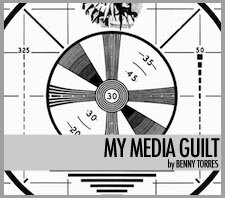THE TRUE IMPACT of STARCRAFT 2
Posted by Eric Bee | July 28, 2010
Did you know yesterday was a national holiday? Yesterday, work was shunned and responsibilities shuttled to the backburners because of Blizzard’s release of Starcraft 2. The game’s release has been long-anticipated by gamers, but also by the industry in general. In the face of a downturn in retail game sales, as well as the shift toward social gaming and other, industry-shaping trends, Starcraft 2 embodies a lot of the changes the gaming industry is seeing. From digital distribution to pro gaming, Starcraft 2 may be the prime example of a shifting games industry.
Plus, it is so awesome.
For the uninitiated, Starcraft is the definitive real-time strategy franchise on PCs. The epic storyline coupled with the competitively complex multiplayer has kept the title on gamer’s computers for over 10 years. The graphics are aged, the storyline has long been picked apart, but the gameplay has not only stayed competitive, it’s also established a , with pro Starcraft players revered on the same level of pro athletes in the United States. It’s a franchise that has transcended gaming to become an industry unto itself.
When a sequel was announced, it naturally brought a lot of new, modern features to its fanbase that reflect just how much the gaming industry has changed since the original Starcraft. For starters, the game introduced a revamped version of Battle.net, Blizzard’s social gaming network built for the multiplayer aspects and DRM management of their titles, including World of Warcraft and the upcoming Diablo 3. This way, Blizzard can connect gamers looking to play Starcraft against other players without the random chance of beginning players running up against established veterans (oftentimes leading to a trouncing and, in turn, frustrated newbies). Also, the network uses Facebook Connect, allowing players to find friends to play Starcraft against from their established social network. With that, Blizzard is hoping to show that there are more fans of the Starcraft brand than gamers believe, as they have done in the past by bringing World of Warcraft players into the limelight and showing their userbase to be comprised of a variety of demographics. On top of all this, Battle.net allows for user-generated levels and content to be uploaded and shared across their network, giving way to what games like Little Big Planet offer in terms of taking an established engine and seeing what the users are capable of within that space.
Also, the game is being offered by Blizzard as a digital download; a common practice in PC gaming with Valve’s Steam service, but with Starcraft 2 reinvigorating a typically low-key PC market, it’ll be a great game to watch when it comes to gamers’ shopping habits. The NPD Group recently published a study that finds PC digital distribution of games have achieved retail parity with typical sales channels, meaning we’re on the edge of digital distribution overtaking retail and, thusly, shifting how publishers bring their games to market. Starcraft 2‘s sales over the next month may be the tipping point for digital distribution and, with PC usually setting the trends for the console space, may signal a sea change in where gamers pick up the newest, hottest games.
Overall, though, if you haven’t played any of the Starcraft games, they’re a great case study into how form, design, function, and community all can work together in gaming to make something special, something that easily transcends its intentions and becomes timeless. In looking at the ever-changing future of games, Starcraft 2‘s launch becomes more than another milestone for the gaming enthusiast to schedule his vacation by. Starcraft 2 may very well set the tone for gaming’s future, in both retail and user experience.
Plus, it is so awesome. If you’re looking for some friends to round out your Battle.net list, leave a comment here and we’ll add you in-game. Beware, though. Tim Harris has been fiending for some competition in scary, scary ways around here.
Leave a Comment
RSS feed for comments on this post · TrackBack URI

